As desktop virtualization becomes foundational to hybrid work strategies, many enterprises turn to Azure Virtual Desktop (AVD) with Nerdio for its Microsoft-native capabilities. But beneath the surface, named-user licensing, layered infrastructure costs, and limited automation often result in higher-than-expected total cost of ownership (TCO).
Thinfinity VDI on Oracle Cloud Infrastructure (OCI) offers a smarter, more flexible alternative: a platform that leverages concurrent user licensing, aggressive automation, and lower cloud infrastructure pricing to reduce costs by up to 40–50% — all without sacrificing enterprise features.
Licensing Models: Nerdio vs Thinfinity — Key Differences
Nerdio Licensing Explained
Nerdio adds automation and management tools on top of Azure Virtual Desktop. Its licensing model includes:
- Microsoft AVD access rights – typically included via Microsoft 365 E3/E5 or RDS CALs.
- Nerdio Manager licensing – priced per named user or active user per month, typically:
- $10–$14 per user/month
- Each user who logs in that month triggers a charge, even if used once
- No concurrency discount — licenses required for all users, all month
This model becomes expensive for organizations with:
- Shift-based usage (e.g. call centers)
- Occasional access roles (e.g. executives, QA/testers)
- Unpredictable user patterns
Thinfinity Licensing Explained
Thinfinity Workspace licenses by concurrent user:
- $10 per concurrent user/month (starting price)
- Unlimited named users
- Licenses required only for the peak number of simultaneous sessions
This is significantly more efficient for most organizations, especially those with fluctuating usage or low concurrency patterns.
In typical VDI deployments, peak concurrency is only 50–60% of the total user base. That translates to 40–50% fewer licenses — and less waste.
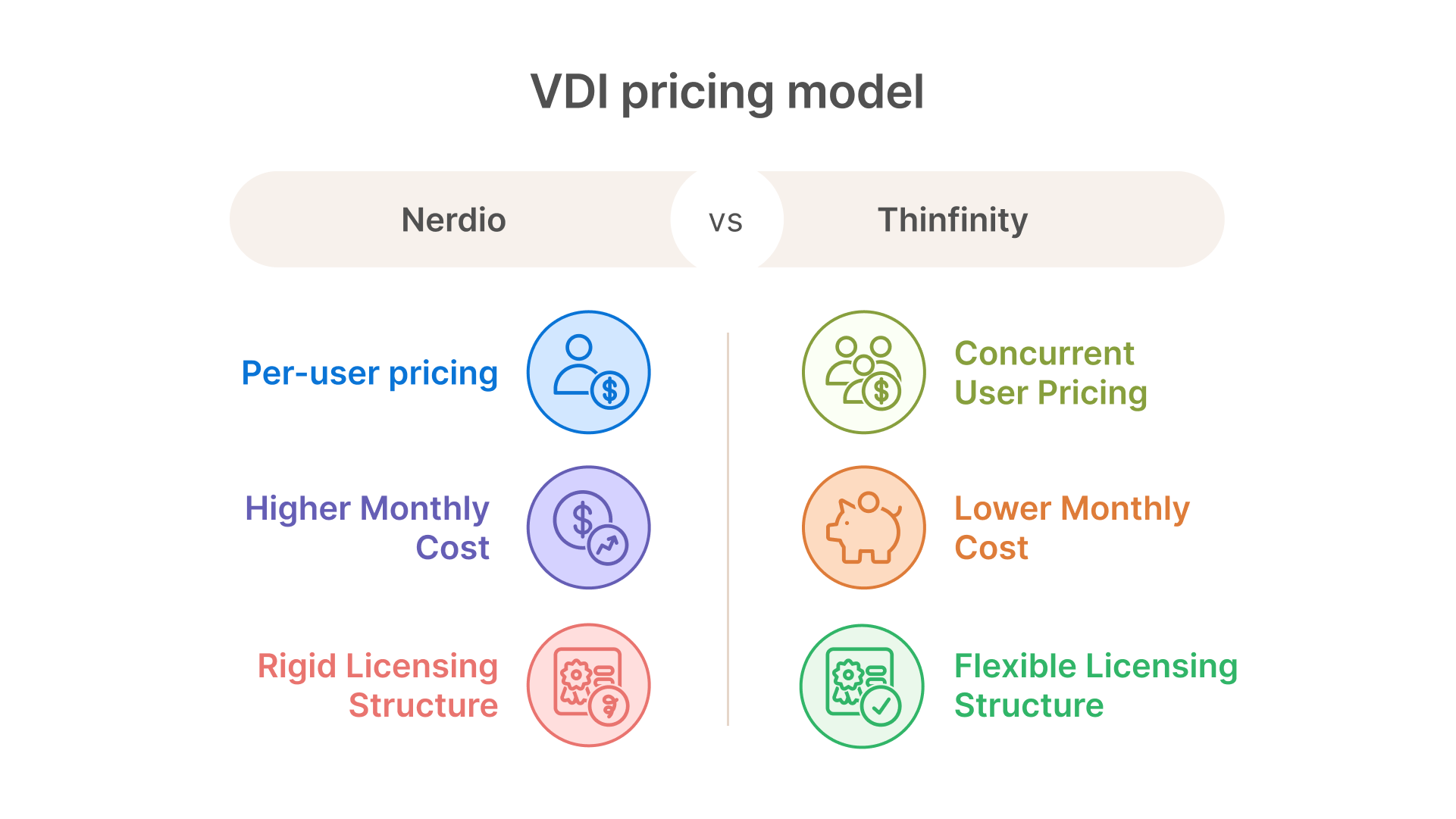
Infrastructure: Azure vs Oracle Cloud (OCI)
Beyond licensing, the underlying cloud infrastructure cost is another TCO driver. Here’s a direct comparison:
| Resource | Azure | Oracle Cloud (OCI) | Savings |
|---|---|---|---|
| 4 vCPU / 16 GB VM | ~$140/month (D4_v5) | ~$77/month (E4.Flex) / $38 (Ampere A1) | Up to 70% cheaper |
| 100 GB Premium Disk | ~$8.10/month | ~$4.25/month | ~47% cheaper |
| Egress Traffic | First 100 GB free, then ~$90/TB | 10 TB/month free, then ~$8.50/TB | Over 90% cheaper |
OCI’s pricing is more transparent and offers greater flexibility, including burstable and ARM-based instances — ideal for bursty VDI workloads like QA or developers.
Why Automation Matters for Cloud VDI Cost Control
Automation isn’t just a productivity booster — it’s essential for controlling costs.
Without automation:
- Idle VMs may run for hours or days
- Powered-off VMs still accrue storage and network costs (e.g., in Azure)
- IT teams overprovision for peak usage “just in case”
💡 According to cloud optimization studies, idle VMs can inflate costs by 30–50%.
Automation helps by:
- Starting/stopping VMs based on schedule or usage
- Automatically deallocating or destroying idle machines
- Scaling resources up/down in real-time
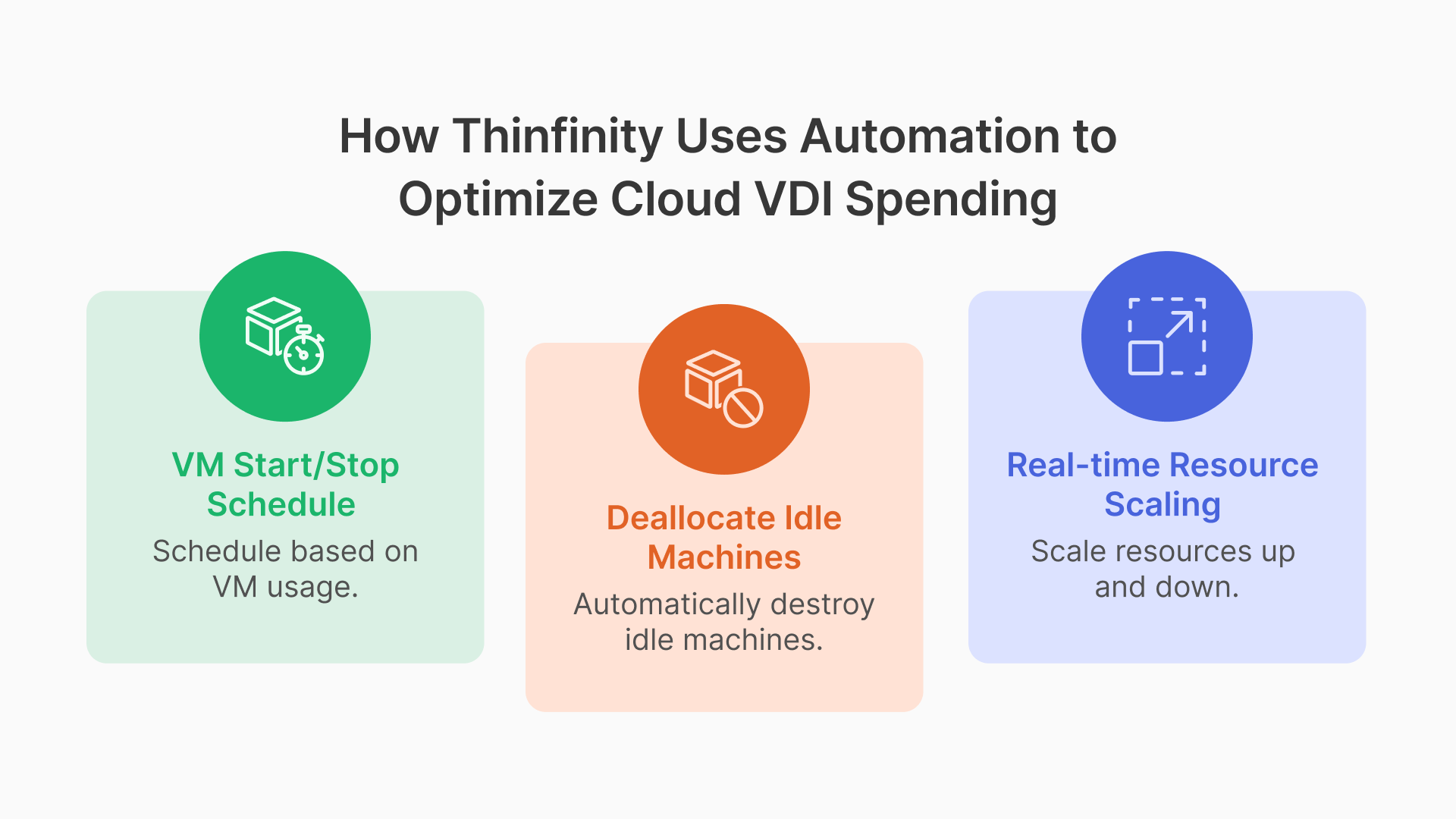
Automation Comparison
| Feature | AVD (Native) | AVD + Nerdio | Thinfinity on OCI |
|---|---|---|---|
| Auto Start/Stop | Basic | Enhanced via UI | Native & role-aware |
| Autoscaling by Concurrency | Limited | Session-host based | Session-aware, real-time |
| Destroy Idle Machines | ❌ No | ⚠️ Only stops VMs | ✅ Full destroy & rebuild |
| Idle Session Timeout | ❌ Manual policy | ✅ Configurable | ✅ Built-in & enforced |
| Cost Optimization Feedback | ❌ None | ✅ Estimator | ✅ Telemetry + policy-based |
| Cloud Compatibility | Azure only | Azure only | OCI, hybrid, multi-cloud |
Thinfinity enables automated full-cycle VM lifecycle control, cutting cloud spend and operational overhead with every idle desktop it shuts down or destroys.
Case Study: 1,500-User Bank Deployment
Profile:
- Industry: Financial Services
- User Count: 1,500
- User Segments:
- Call Center – 600 users (60% concurrency)
- Developers – 300 users (60%)
- QA – 300 users (60%)
- Management – 300 users (30%)
Licensing Cost Comparison
| Team | Named Users | Peak Concurrent | AVD + Nerdio (@$10/user) | Thinfinity (@$10/user) |
|---|---|---|---|---|
| Call Center | 600 | 360 | $6,000/month | $3,600/month |
| Developers | 300 | 180 | $3,000/month | $1,800/month |
| QA | 300 | 180 | $3,000/month | $1,800/month |
| Management | 300 | 90 | $3,000/month | $900/month |
| Total | 1,500 | 810 | $15,000/month | $8,100/month |
| Annual | — | — | $180,000 | $97,200 |
Licensing savings = $82,800/year
Cloud Infrastructure Comparison (810 concurrent VMs)
| Category | AVD on Azure | Thinfinity on OCI |
|---|---|---|
| Compute | ~$110,000/year | ~$66,000/year |
| Storage (1 TB) | ~$8,000/year | ~$4,250/year |
| Egress (10 TB) | ~$8,000/year | ~$1,000/year |
| Total Infra | $126,000/year | $71,250/year |
Infra savings = $54,750/year
Total TCO Comparison
| Category | AVD + Nerdio | Thinfinity + OCI | Annual Savings |
|---|---|---|---|
| Licensing | $180,000 | $97,200 | $82,800 |
| Infrastructure | $126,000 | $71,250 | $54,750 |
| Total TCO | $306,000 | $168,450 | $137,550/year (~45%) ✅ |
Why Enterprises Choose Thinfinity on OCI
- 💰 40–50% lower TCO by combining concurrent user licensing with Oracle Cloud’s lower infrastructure costs
- ⚙️ Automation-first architecture eliminates idle resources and cloud overspend through policy-driven VM lifecycle management
- 🖥️ Purpose-built for virtual desktops and applications — supports session-based, 1-to-1 dedicated, persistent or non-persistent desktops, and even GPU-accelerated workloads
- 🌐 Fully browser-based access with no client install required, enabling fast, secure access from any device
- 🔐 ZTNA-Native with integrated support for MFA, SSO (SAML/OAuth), RBAC, and hybrid or multi-cloud deployments
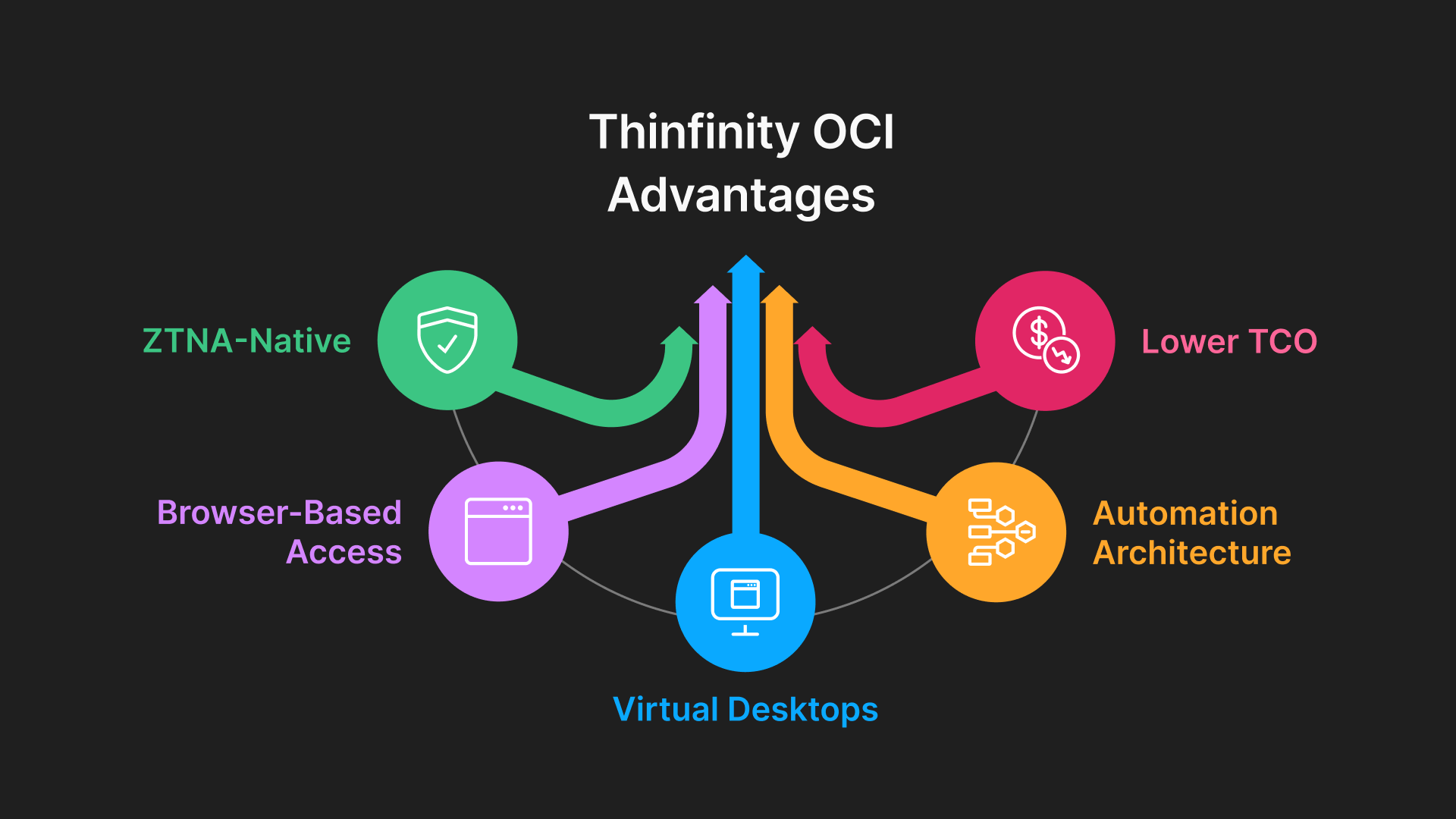
Take the Next Step
If you’re currently running AVD + Nerdio or planning a VDI deployment, it’s time to explore a more cost-effective model.
FAQs
1. What is the main difference between Thinfinity and AVD + Nerdio licensing?
Thinfinity licenses by concurrent users, meaning you only pay for the number of users actively connected at the same time. AVD + Nerdio licenses by named or active users, which charges you for everyone who connects during the month — even once. This makes Thinfinity much more cost-efficient for teams with fluctuating usage.
2. What is included in the $10/month Thinfinity license?
The $10/month (starting) price includes:
- Concurrent user access
- Full Thinfinity Workspace features (RDP, SSH, VNC, WebApps)
- Multi-monitor browser access
- ZTNA features like MFA, RBAC, and SSO
- Deployment flexibility (on-prem, hybrid, cloud)
3. Can Thinfinity be deployed outside Oracle Cloud?
Yes. Thinfinity is cloud-agnostic and supports on-premises, hybrid, and multi-cloud environments. However, OCI delivers optimal cost savings and scalability for cloud-native VDI deployments.
4. How does Thinfinity automation reduce costs?
Thinfinity automatically starts, stops, and destroys VMs based on real-time session data and user roles. This prevents idle resources from consuming cloud budget, which studies show can reduce cloud costs by 30–50%.
5. How secure is Thinfinity for regulated industries like banking?
Thinfinity supports:
- Multi-Factor Authentication (MFA)
- Role-based access control (RBAC)
- Identity federation via SAML, OAuth
- Browser-based Zero Trust Network Access (ZTNA)
- Full audit logs and session tracking
These features make it ideal for banking, healthcare, and government use cases.
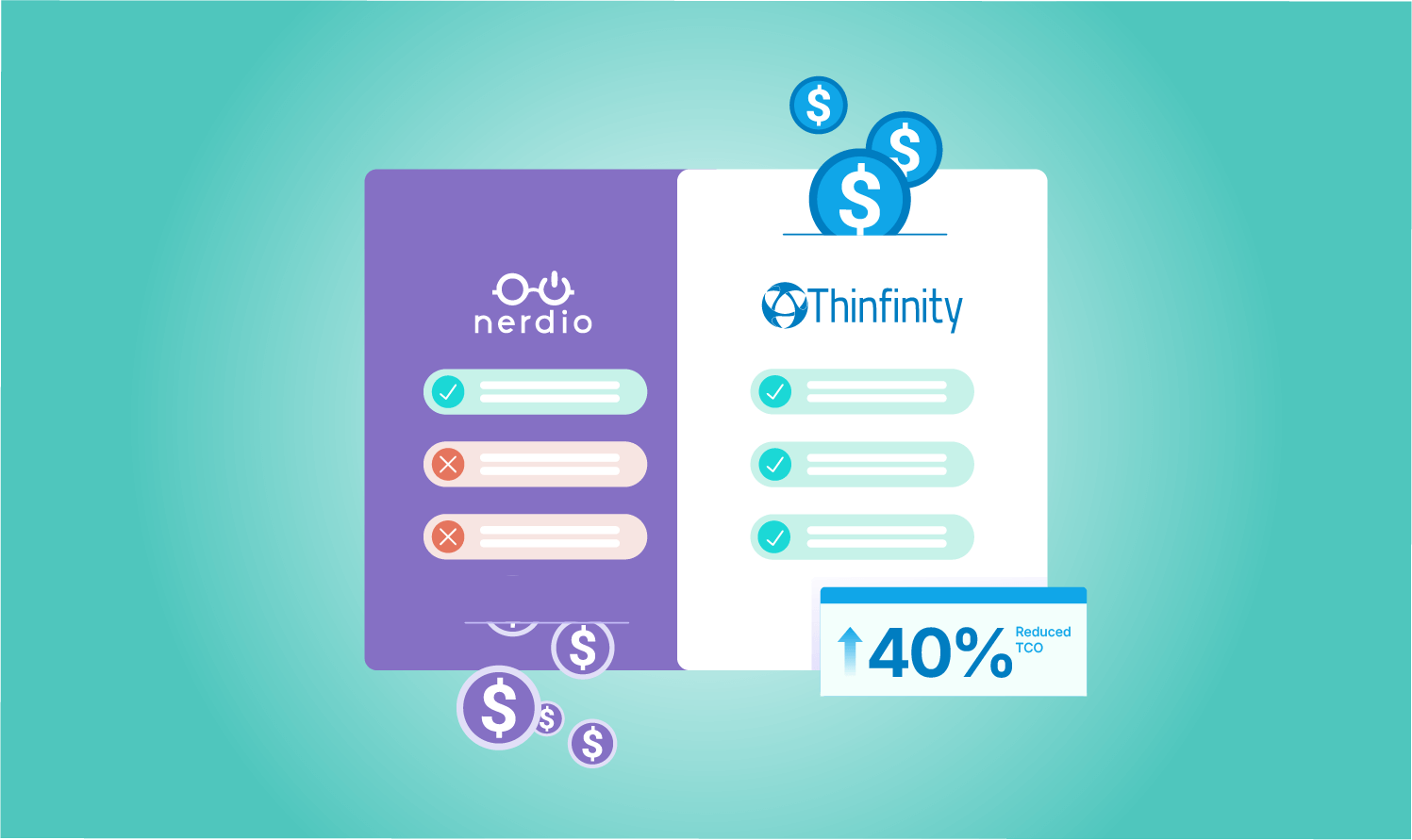
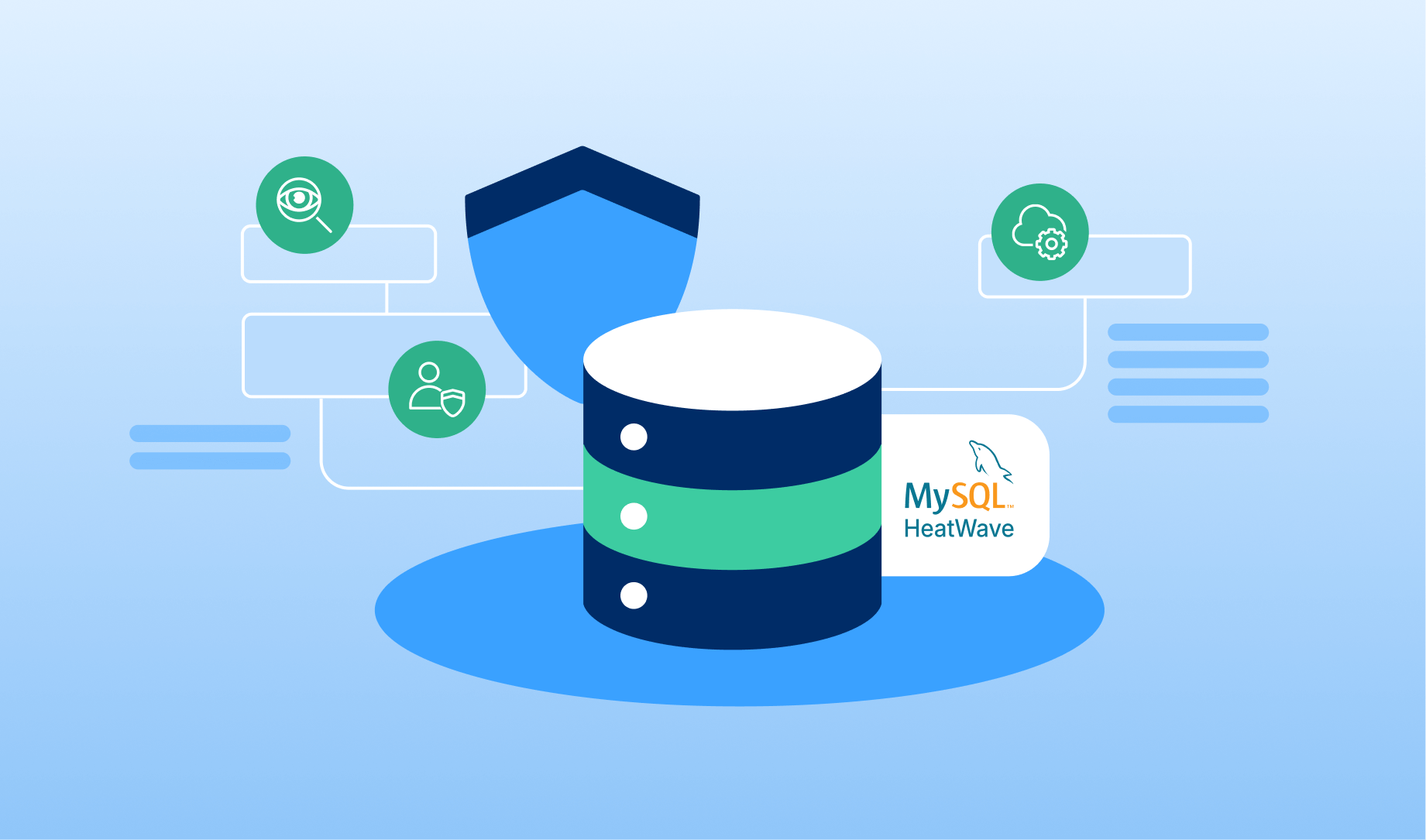

1 Comments
This article provides a great breakdown of cost savings when using Thinfinity VDI on Oracle Cloud. It’s super helpful for anyone considering VDI options!